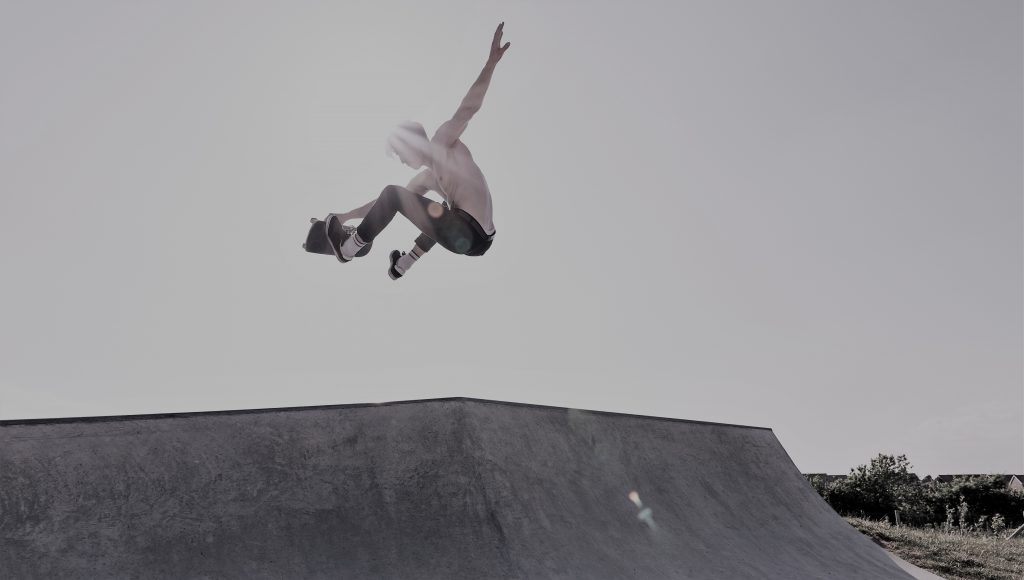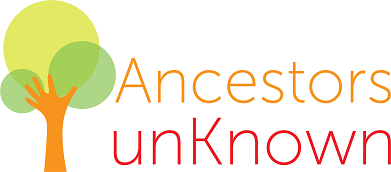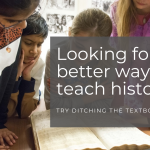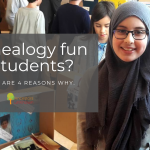Increase student engagement in history class
If history class is more fun, will it increase student engagement? At Ancestors unKnown, we think so.
Students prioritize the fun in history, and so should we
When looking at some of the feedback I’ve gotten from Ancestors unKnown’s students over the last couple of years, one word makes a frequent appearance: fun.
Student opinions
Some students are enthusiastic about all the fun they’ve had learning about their ancestors, asking their family members questions, and discovering new things about other parts of the world. They say things like, “it was really fun to learn about where my grandparents grew up;” and “I had the most fun on the field trip because the history came to life;” and “I liked the investigating part, it was fun.”
Other students are looking for more fun than that. Sure, the whole ancestors + history thing is cool – but it’s not fun. These students recommend we add more games to the curriculum, more animation, more pizazz. You know, fun stuff.

I get it. Everyone wants to have fun. And memorizing facts about 1863 isn’t fun for everyone. For some, history class needs to meet them halfway.
I’m the first to admit I didn’t like studying history when I was in high school. In fact, I didn’t even see the fun potential in the subject. I looked at history through a lens of resentment and frustration. Since my ancestors and their stories weren’t accurately represented, and I was angered by the erasure of Black narratives, I had no time for any of it.
Representation went beyond the mere mention of my ancestors. Because even when Black and brown people showed up in the curriculum, I stayed checked-out. Well, I perked up for a few minutes during that one trimester when we studied Third World History. But once I realized those three months were dedicated to the whole entire history of the entire global south, and that the whole non-white part of the planet was labeled “third world” – no, I wasn’t having any fun.
Beyond my childhood angst, the bigger point is what I (don’t) remember from those history classes. How much of the subject made an impression? Honestly, not much. Because when you’re angry and annoyed, you don’t have much time to remember things. Most of that historical information went in one ear, and with a swift eye-roll, was quickly tossed out that very same ear. Useless.

Finding the fun – and why it matters for student engagement
As educators, we must be careful about how we teach history. We should know what our students care about and if/how they connect with the subject. We can tell great stories, talk about famous people, show a movie or two, and connect it all to dates and maps; but if there’s no special connection made, or no fun involved, the information might not be retained.
So how can we make history more fun for students? Here are some ideas:
More games
Ancestors unKnown students recommend games. And I’ve been told more than once that I should turn Ancestors unKnown into a game (stay tuned for that).
Well, they’re all right. Research reveals there are benefits to incorporating games into the school day, including deeper learning and increased engagement. According to Bill Tally and Jim Diamond at teachinghistory.org, “ames can enable students to imaginatively enter a constructed historical world, interact with research-based social and political archetypes, and contemplate the consequences of their actions.”
With that type of engagement encouraged, students will likely find their history classes more relevant, easier to understand, and much more memorable.
Reverse roles
Instead of starting with a conclusion and telling students what to learn, give them some control over the narrative. Let students do some investigating, piece some details together, determine how events carried out, and construct their own version of the story. If students have the same facts, but come up with very different historical narratives, they’ll get a taste of how history books are actually written. And figuring out who’s narrative is more accurate? Well, that could be the fun part.
Ancestors unKnown students have the joy of investigating their ancestors’ lives and constructing their own histories, giving them an opportunity to take ownership of their learning, as well as their family stories.
Yet still, they want more fun…
Connect the past and the present
Sometimes the present can feel more interesting and relevant than the past. Students are more likely to remember or care about events in Ferguson, MO than the events of the Boston Tea Party, or even Nat Turner’s rebellion. But asking them how those events connect? Now that gets more interesting.
In The Atlantic, David Cutler described his approach to teaching history: “In American history, I start each unit by making obvious the connections to today. In my experience, nothing grabs student interest like pointing out not only human folly, but also how, to varying degrees, history repeats itself.”
It gets to be even more fun when students see themselves as part of history, which happens when they see how the past, present and future connect.
Get out of the classroom
Across the board and in all locations, Ancestors unKnown students have fun on field trips. Sure, there’s a certain amount of fun that comes from breathing fresh air and joining the outside world at the peculiar time of 11:15 am, but it’s more than that. In their feedback about field trips, students describe their learning as fun. Searching through old newspapers, seeing the special details of documents or buildings in-person, and holding artifacts in their hands, they engage with curiosity and imagination.
Although this outside and hands-on approach isn’t practical for every day, you can use one field trip to connect multiple events and historical figures. The information comes together, and students have some fun in the process. Win-win.
In a research study from the University of Arkansas, summarized by Julia Ryan in The Atlantic, researchers concluded that “cultural field trips offer students, and in particular, disadvantaged students, an important opportunity to add measurable depth to their education.”
Field trips are less common nowadays. But let’s not forget how important they are.
More ideas?
So, as we’re continuing to improve the Ancestors unKnown curriculum, and taking our students’ input into account, we’re searching for the fun. We’ll work with these ideas. And we’re always open to more.
For the educators and historians among us, how do you make history class fun for students?







